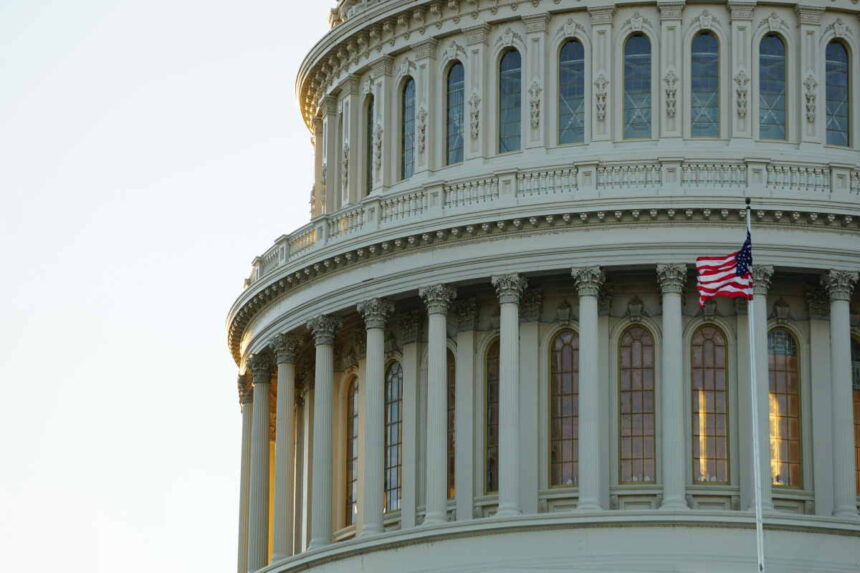In a seismic shift of power, the Republican Party has captured the Senate, toppling mainstays within the Democratic Party and picking up new seats in numerous battleground states. The victory resets the legislative dynamics, positioning the GOP to take control of the Senate and push its policy agenda items. While yet to be seen by what margin, the victory underlines voter support for the party’s agendas on the economy, immigration, and security.
Republicans Capture Key States, Win Control of Senate
By Tuesday, Republicans had picked up big wins, taking control of seats in traditionally Democratic states like Ohio and West Virginia. In Ohio, longtime Democratic Senator Sherrod Brown battled it out in his home state against Bernie Moreno, a Republican businessman. But ultimately, Brown couldn’t break through the GOP wave after trying to appeal to a wide base on labor union ties and economic policies; on immigration and social policies, Moreno’s messaging boomed louder to enough voters to give him a win and flip a key seat.
In West Virginia, Republican Governor Jim Justice won an open seat left by outgoing Senator Joe Manchin, who only recently became an independent after a career-long affiliation with the Democratic Party. A victory by Justice was largely anticipated because, over the past ten years, West Virginia has turned rightward. Together, the wins in Ohio and West Virginia helped comprise the majority of the GOP and clinched their control of the Senate to end four consecutive years of Democratic leadership.
Battleground States Narrow the Margin
Though Ohio and West Virginia turned Republican, swing states like Wisconsin, Pennsylvania, and Michigan remained closely contested all through election night, as they were expected to determine the dimension of the majority that the GOP is likely to enjoy.
Republicans also held onto Montana, where Democratic incumbent Senator Jon Tester faced a stiff challenge posed by Tim Sheehy, a former Navy SEAL and businessman. Tester, on the other hand, is a seasoned politician known for his work across the aisle, fighting against the odds in a state that has turned increasingly Republican in recent elections. The final count is yet to come, but such a lead by the GOP in these swing states promises they might expand their margin, thus strengthening their position.
GOP Leadership to Get Ready with New Agenda
Republican leaders celebrated the Senate majority as an opportunity to advance policy initiatives in Washington. Senator John Barrasso of Wyoming, a top-ranking Republican who was re-elected, identifies the GOP’s legislative agenda: Reducing inflation, lowering government spending, securing borders, and advancing energy independence are among the policy issues the Republican leadership says puts it in step with what it refers to as the priorities of the American people. These are all objectives of a larger conservative vision on domestic and economic issues that will have more appeal to the masses of voters struggling with everyday care.
This will have huge ramifications, given the new Republican leverage in the Senate’s legislative agenda. Immigration reform, tax cuts, and domestic energy production are some of the bills that will see a front-burner approach, unlike the policy direction during the Democratic tenure. Such a change in direction might create conflicts with the Democratic-controlled executive, which could veto such bills or negotiate them indefinitely.
Democratic Losses in the Wake of Growing Issues
For the Democrats, it was an uphill climb led by Senator Chuck Schumer this election cycle. The possibility of losing control in the Senate placed Democrats in a position of having to defend their seats in states that former President Donald Trump easily won in 2016 and 2020. Schumer was disappointed at the result, but he acknowledged a difficult electoral map and the apparent continued influence of Trump in these regions.
Sherrod Brown’s defeat in Ohio encapsulated the challenge Democrats face in battleground states that have shifted to more conservative electorates. He spoke on issues of abortion rights and welfare benefits, but his message wasn’t enough to overcome the state’s resistance to that shift. Meanwhile, in Montana, the senator, Tester, was in an uphill fight, symbolic of bigger regional trends for the Republican candidates to take traditionally Democratic states.
But even with those losses, Democrats managed to hold onto some critical seats: Angela Alsobrooks became the first Black woman to represent Maryland in the Senate, defeating former Governor Larry Hogan. The victories of Alsobrooks and others, like in the state of Delaware, are a reminder that the Democratic Party has maintained its clout and still appeals to a variety of diverse constituencies.
Looking Ahead and Possible Policy Battles
The newly elected Republican-controlled Senate is likely to challenge the Biden administration on many fronts, putting economic reforms, immigration policies, and energy independence into the spotlight. This is how the GOP plans to shape the legislative agenda in its image while pushing back against what it labels as Democratic “overreach.” This power shift may portend clashes between the Senate and the executive branch on issues where the two parties harbor starkly different views.
The Republicans have supported legislation that cuts back on federal spending opposite of the Biden administration’s investment in social programs and green energy initiatives. Equally, the attention to border security from the GOP could raise new debates over immigration reform, particularly those related to asylum policies and border enforcement measures.
Now that the Republican Senate is on track to advance a conservative legislative agenda, the test will be to tackle policy areas from healthcare and education to national security. It is here that the GOP has to navigate through thorny issues while attempting to balance demands from its core voter constituency. This balancing, in essence, lies at the heart of maintaining party unity and ensuring that legislative proposals match up to election campaign promises.
A New Era for the Senate
The Republican Party won in a way that they took control of the Senate, imbuing the nation’s politics with fresh impulses. The wins in crucial states and the majority in the Senate offer a well-laid path for implementing any policy vision. However, the narrow majority and how close some of the races in swing states were suggest that both parties will have to work together on specific issues if they hope for any lasting legislative changes.
Over the coming months, many will be watching the Senate closely as it embarks on its new role and releases an agenda. The effects of this change won’t be limited to the confines of the now-current legislative process but will also impact more generally on the political atmosphere leading up to the next presidential election. For now, the Republicans are in control of the governmental reins, establishing a new set of policies that will once again reformulate what is important to this nation and its people.




